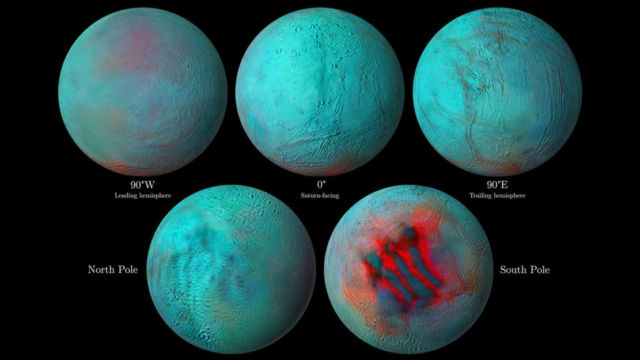NASA’s infrared eyes detected evidence of fresh ice on one of Saturn’s Moon, Enceladus.
In these detailed infrared images of Saturn’s icy moon Enceladus, reddish areas indicate fresh ice that has been deposited on the surface.
Scientists used data gathered by NASA’s Cassini spacecraft during 13 years of exploring the Saturn system to make detailed images of the icy moon – and to reveal geologic activity.
New composite images made from NASA’s Cassini spacecraft are the most detailed global infrared views ever produced of Saturn’s moon Enceladus. And data used to build those images provides strong evidence that the northern hemisphere of the moon has been resurfaced with ice from its interior.
Cassini’s Visible and Infrared Mapping Spectrometer (VIMS) collected light reflected off Saturn, its rings and its ten major icy moons – light that is visible to humans as well as infrared light. VIMS then separated the light into its various wavelengths, information that tells scientists more about the makeup of the material reflecting it.
Image Credit: NASA/JPL-Caltech/University of Arizona/LPG/CNRS/University of Nantes/Space Science Institute
source ESA






Leave A Comment